By Chin Yuqin Casey
Manila, Philippines—a city bustling, sprawling and overflowing with culture and life. My classmates and I had the pleasure of travelling there as part of the highly anticipated study trip organised by LASALLE’s MA Asian Art Histories programme.
In just a few days, we got an unforgettable taste of the city’s art, heart, histories, and of course its incredible food. It was a great privilege to enjoy this adventure—to see and learn, experience and be changed.
As art history students, our itinerary was packed with opportunities to encounter art. While what we saw was just a drop in the ocean that is the massive, ever-evolving Filipino art scene, it nonetheless left a deep and lasting impression.
At the Museum of Contemporary Art and Design (MCAD), we caught Maria Taniguchi’s solo exhibition, Body of Work. This show featured Taniguchi’s impressive engagements with time and materiality, immersing us in the world of her work. I for one left the show feeling that I saw the world a little differently, as bricks and lines, circles and substance, gaze touched by Taniguchi’s distinct visual language.
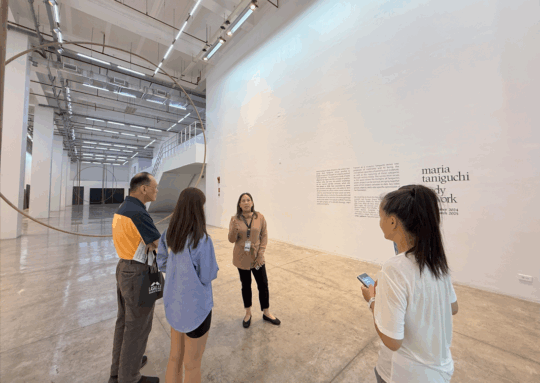
Viewing Maria Taniguchi’s show at the Museum of Contemporary Art and Design (Photo credits: Sabrina Yin)
The Metropolitan Museum also presented many compelling artworks. The exhibitions Dream States and Timeless: J. Moreno were especially memorable, each an exciting aliquot of the Filipino art scene. Dream States gathered inventive international perspectives on the nebulous idea of dreams. Meanwhile Timeless dove deep into the legacy of celebrated Filipino fashion designer José “Pitoy” Moreno. The storytelling in this exhibition impressively communicated the spirit of Filipino cultural history, mediated through Moreno’s journey in fashion.
One highlight of our study trip was seeing the National Museum of Fine Arts collection. Aided by our cheerful and enthusiastic tour guide, we had a fruitful experience with the visually stunning artworks and learning about their deep entanglements with Filipino history.

Tour of the National Museum of Fine Arts (Photo credits: Sabrina Yin)
This visit was so impactful that we even returned later to spend more time with its vast collection, and to explore the nearby National Museum of Anthropology and National Museum of Natural History—the latter of which was a personal favourite for me. Seeing its detailed specimens and recreations of flora, fauna and geology that are native to the Philippines added a fascinating ecological dimension to our ways of knowing the vibrant country.
The Ayala Museum also provided a particularly historical dimension to our learning. Its stunningly detailed dioramas and well-curated selection of artefacts showcased how history, art and culture evolved in dialogue with contemporary Filipino society.
Aside from museums, we also visited several private galleries, including The Drawing Room, Art Informal and Silverlens. This gave us a look into many vibrant voices and currents fuelling the art ecosystem of the Philippines. Meeting and befriending people involved in these art worlds, fellow participants in conversations of culture, was very enjoyable too.

With staff at Silverlens art gallery (Photo credits: Jeffrey Say)
Beyond these art institutions, we also explored other spaces in Manila committed to history and learning. One such place was Rizal Park, a site that one museum guide later described as a landmark used to help visitors situate all others; a spatial and symbolic heart of Manila. Here, the commemorative sculptures, evening light shows and atmospheric music made for a memorable experience. A cute feline friend even welcomed us here!
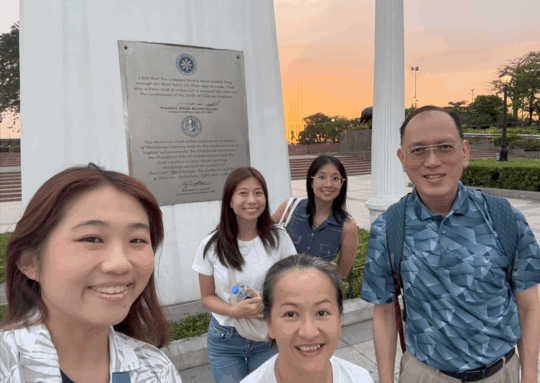
At Rizal Park (Photo credits: Sabrina Yin)
We also had the privilege of visiting Archivo 1984, an archival centre of Philippine art, books and memorabilia reflecting the tastes of its founder, as well as the Purita Kalaw-Ledesma (PKL) Centre. Run by the PKL Foundation, this art research centre is dedicated to preserving a rich historical library of material related to the influential art figure, Purita Kalaw-Ledesma, and supporting various adjacent projects in art and research. We were very inspired seeing the important knowledge-production and memory work performed by these institutions.

At the Purita Kalaw-Ledesma Center (Photo credits: Jeffrey Say)
Another particularly meaningful part of the trip was our visit to the University of the Philippines, Diliman. We were generously given a welcome breakfast, campus tour, and visit to the Vargas Museum, during which we also had the pleasure of meeting fellow scholars, artists and thinkers, enjoying rich conversations and fun exchanges. The jeepney ride we took through the campus also added a touch of local joy to the day. I reflect fondly on this experience as testament to the power of shared passions, in connecting minds across borders.
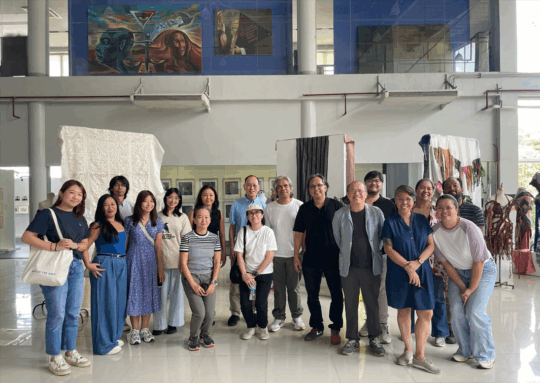
With students and faculty of the University of the Philippines Diliman (Photo credits: University of the Philippines Diliman)
We visited the Ateneo Art Gallery as well, where we basked in the impressive collection of Filipino art that gathered both historically-established artworks and innovative contemporary experiments in one place.
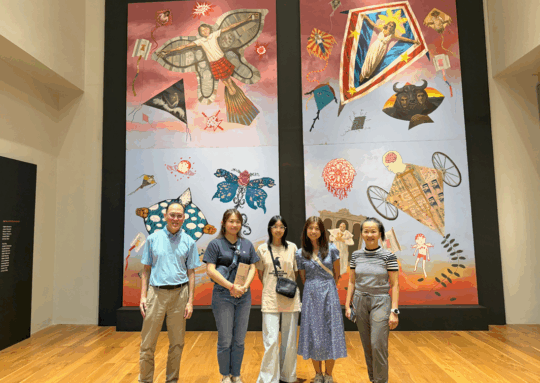
At Ateneo Art Gallery (Photo credits: Sabrina Yin)
Surrounding and supporting all these experiences were the more subtle parts of Manila’s culture that added colour to our trip. From the delicious local food (tofu sisig and ensaymadas were my personal favourites), to the warm hospitality of many people we met, to the unique architecture and atmosphere of the city—countless details framed our experiences.
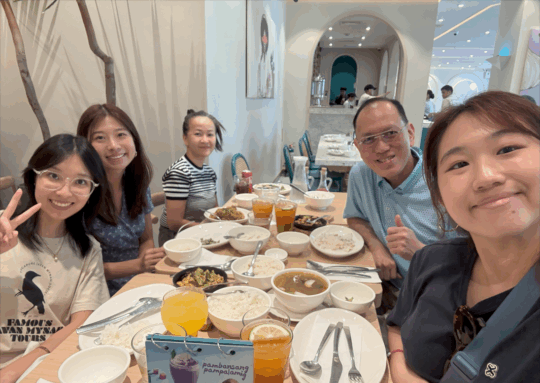
Enjoying local delicacies (Photo credits: Sabrina Yin)
Ultimately, our trip was not just about studying things from the outside, but about being invited into encounters—participating, connecting, transforming and being transformed along the way. Since our return from this adventure, we continue to treasure all the big and little things that made our time in Manila as memorable as it was meaningful.

